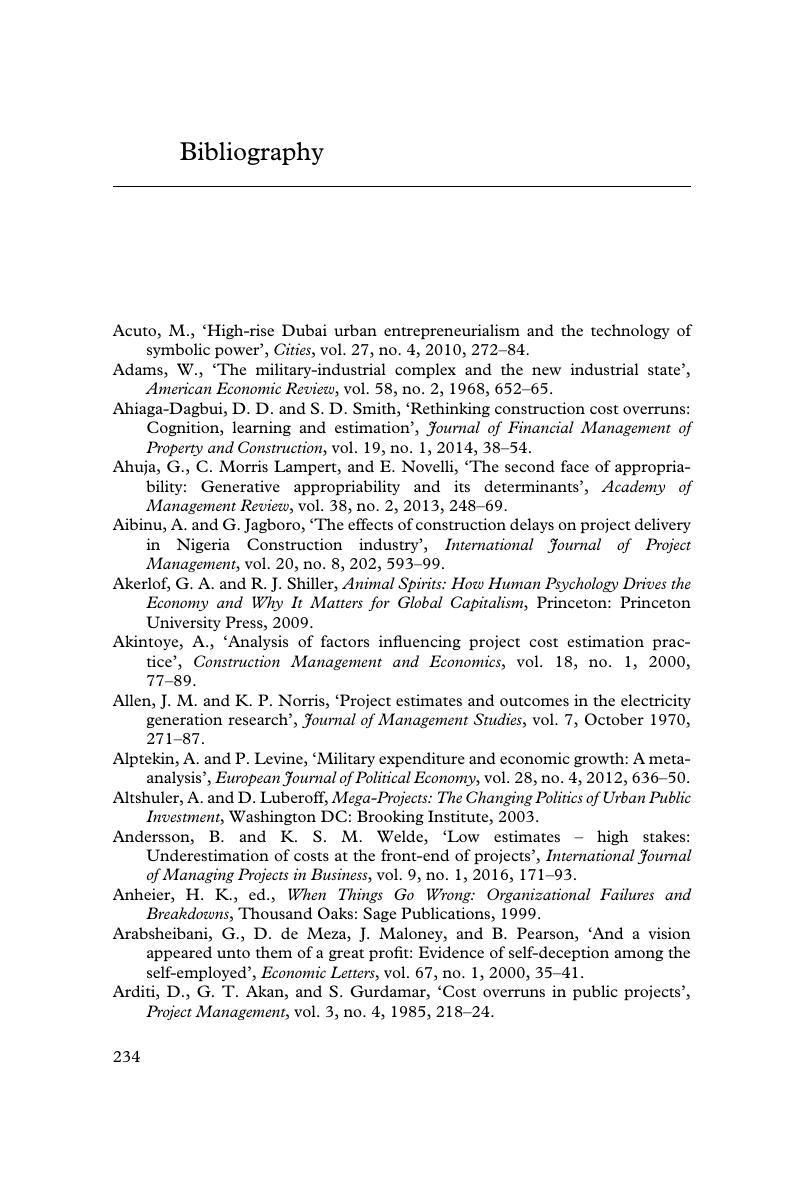Book contents
- Project Cost Overrun
- Project Cost Overrun
- Copyright page
- Contents
- Figures
- Tables
- Acknowledgements
- 1 Introduction
- 2 Project Planning, Cost Estimates, and Deviations in Major Projects
- 3 The Consequences of Cost Overrun
- 4 A Model of Cost Overrun and Growth
- 5 The Logic of Economics Versus the Logic of Politics
- 6 Explaining Cost Overrun, Summary, and Conclusions
- Book part
- Notes
- Bibliography
- Index
- References
Bibliography
Published online by Cambridge University Press: 22 November 2017
- Project Cost Overrun
- Project Cost Overrun
- Copyright page
- Contents
- Figures
- Tables
- Acknowledgements
- 1 Introduction
- 2 Project Planning, Cost Estimates, and Deviations in Major Projects
- 3 The Consequences of Cost Overrun
- 4 A Model of Cost Overrun and Growth
- 5 The Logic of Economics Versus the Logic of Politics
- 6 Explaining Cost Overrun, Summary, and Conclusions
- Book part
- Notes
- Bibliography
- Index
- References
Summary

- Type
- Chapter
- Information
- Project Cost OverrunCauses, Consequences, and Investment Decisions, pp. 234 - 257Publisher: Cambridge University PressPrint publication year: 2017



